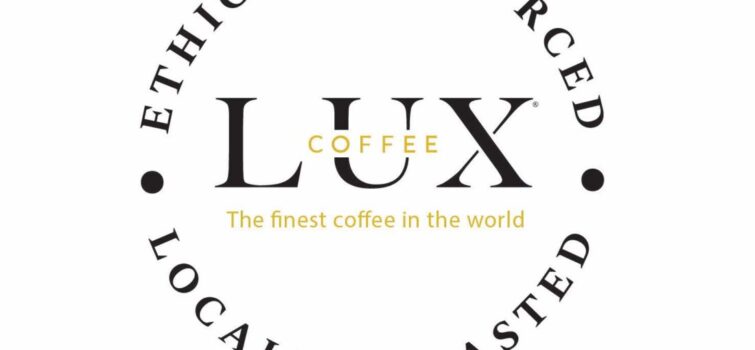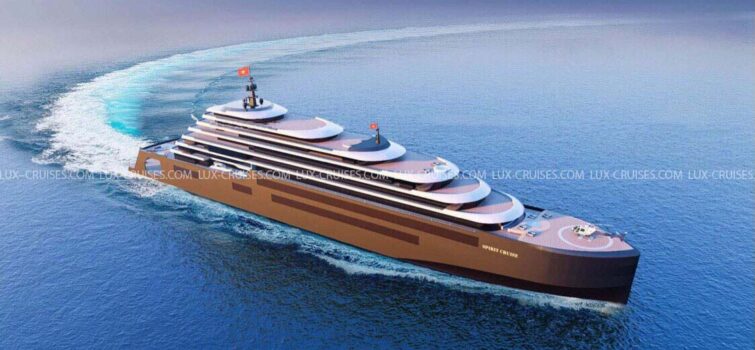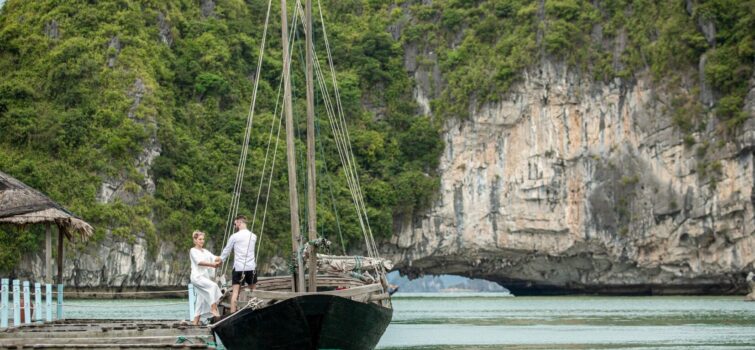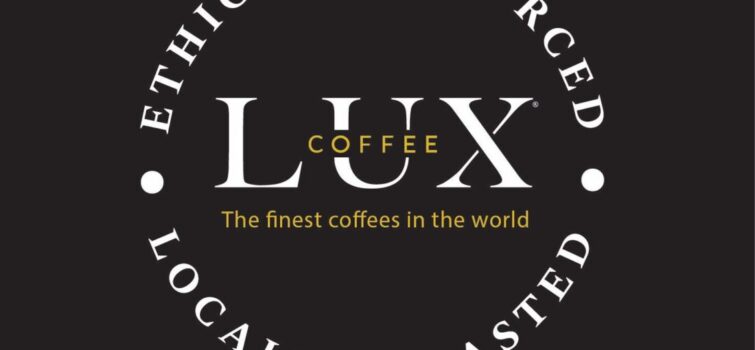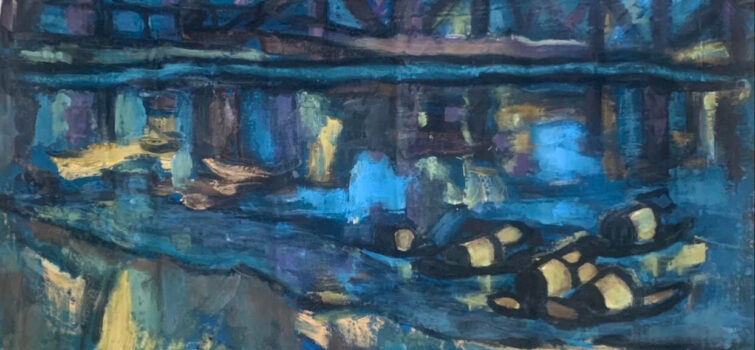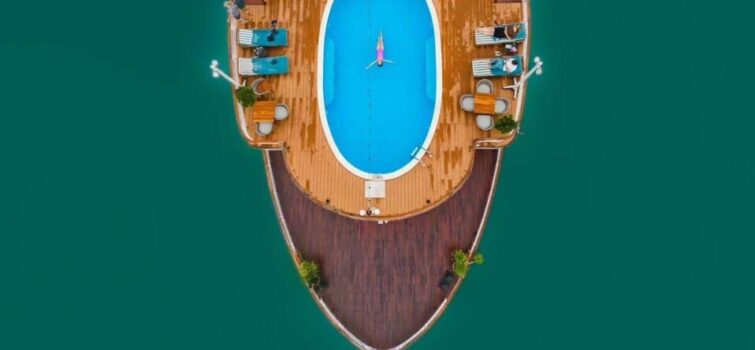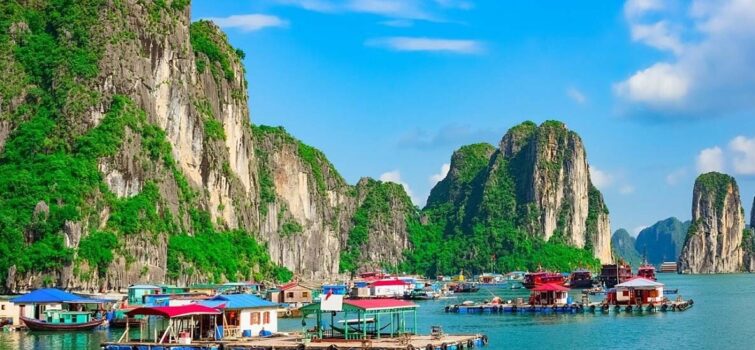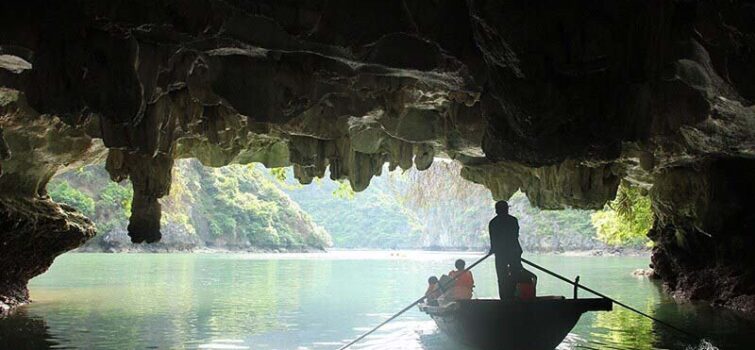Cruise along Ha Long Bay listed among 15 travel ideas to explore Vietnam’s hidden gems including Heritage Bình Chuẩn
Australia’s Lonely Planet Magazine has recommended 15 top travel experiences to discover the culture, cuisine and the hidden gems of Vietnam.
Ha Long Bay
It is said that cruise tour is the best way to explore the world heritage site Ha Long Bay, which is dotted with karst limestone mountains rising out of emerald waters.
For those who want a luxurious overnight stay to watch the sun come up on Ha Long Bay, Heritage Cruises, Indochine Cruise, Paradise Cruise and Stellar of the Seas are worth considering.
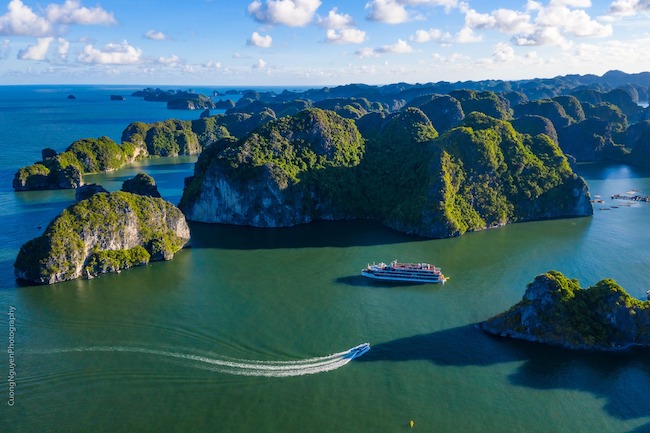 All five-star cruise ships in Ha Long are equipped with luxury cabins and modern amenities like bars, swimming pools, a golf club, a gym and spas.
All five-star cruise ships in Ha Long are equipped with luxury cabins and modern amenities like bars, swimming pools, a golf club, a gym and spas.
They also offer outdoor adventures like kayaking, cave exploring, onboard cooking classes, squid fishing at night and excursions to floating villages.
If Ha Long is crowded, its sister Bai Tu Long Bay is an alternative choice where there are still few tourists.
Other experiences include tasting Hue’s imperial cuisine, watching rare monkeys on Son Tra Peninsula, exploring a UNESCO-protected Hindu temple complex, visiting the Cao Dai Temple, jumping on a motorbike, conquering Ban Gioc Waterfall, breathing the fresh air in Da Lat, visiting Dak Lak’s coffee plantations, discovering Vietnam’s Maldives in Phu Yen…
Get to Know the Ins and Outs of Vietnamese Coffee Culture
In Vietnam, coffee is enjoyed at all times of the day, from the first glass at breakfast, to meetings, dates or social gatherings with friends and family. Coffee has a special place in Vietnamese culture, and this simple drink forms the epicenter of daily life. Recently, I had the opportunity to participate in a coffee demonstration when cruising aboard a luxury boat with Emperor Cruises, on the pristine Bai Tu Long Bay. The presentation allowed me to really understand the origins of coffee in Vietnam, the steps involved in making the perfect cup coffee, and the various regional differences in how people enjoy their coffee from North to South.
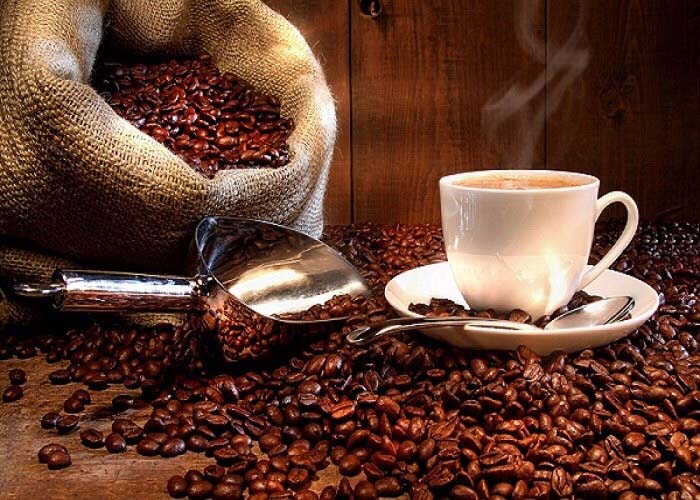 The Origin of Coffee in Vietnam
The Origin of Coffee in Vietnam
Cà phê, café or coffee, depending on which language you speak, originated in the West, and the French have been importing it into Vietnam since colonial times. Back then, coffee was a drink reserved only for the nobility, French officials or intellectuals. Gradually, coffee has become a favorite drink in the lives of all Vietnamese people. In the 1870’s, the first coffee trees were planted at churches in Ha Nam, Quang Binh, Kon Tum Province by monks. In 1888, the first coffee plantation was established in Ke So, Tonkin by the French residing the riverside area. As it became more popular, other plantations were created in highland areas such as Phu Quy, Nghe An, Dak Lak and Lam Dong. Today, Vietnam is the world’s second largest producer of coffee beans and has developed its own distinct coffee culture. Across the country, cultivation focuses on three main types of coffee: Arabica, Robusta, and Excelsa (also known as Liberian coffee).
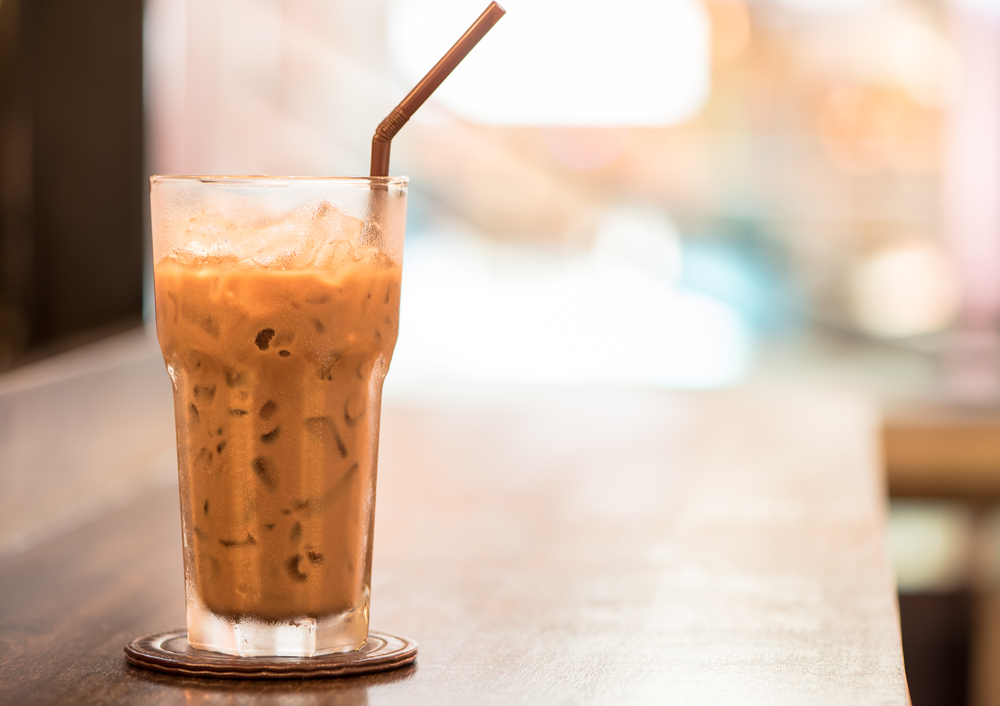
Drinking Style
The sophistication of coffee is reflected in the drinking style of Vietnamese people, who each have their own unique way in which to enjoy it. They don’t consider it a quick caffeine fix to wake you up in the morning like in America. Instead, they sip a cup of coffee and think about life in the same way you might indulge in a good glass of Scotch. The beans are mixed in different ways to create various flavors. The three main coffee styles in Vietnam are filtered, iced, or with condensed with egg or coconut to enhance the taste.
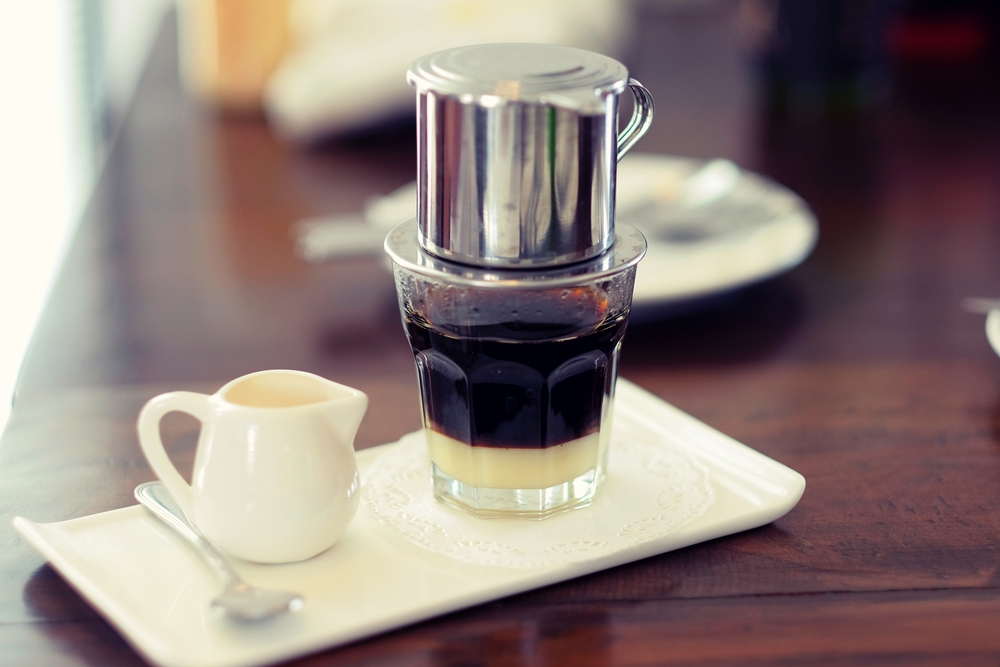
Filtered Coffee
Coffee in Vietnam is often brewed in small metal filters known as a “phin” (which comes from the French word, “filtre”). The Vietnamese filter is akin to a tiny coffee pot that looks like a hat sitting atop the cup or glass. Inside is a chamber for the ground coffee beans, which are placed inside, and hot water is added and allowed to percolate through the small holes. The process can take up to fifteen minutes to complete, and this harks back to the Vietnamese ritual of taking one’s time over coffee.
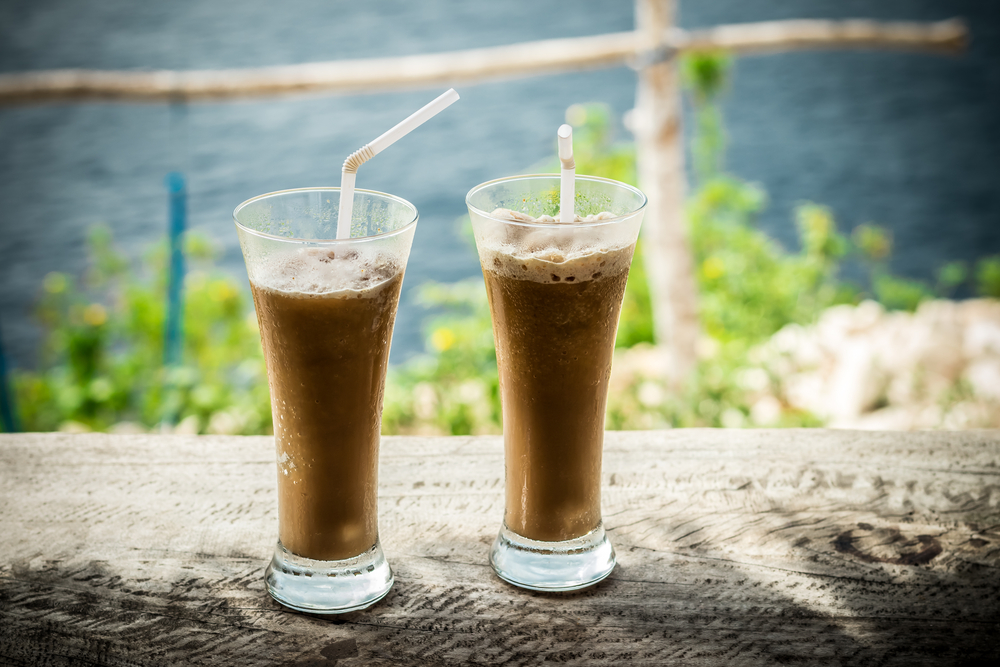
Iced Milk Coffee
Iced milk coffee (Cà phê sữa đá) consists of filtered coffee with condensed milk, which adds a sweet taste to the typically bitter coffee. Iced milk coffee and iced black coffee are the two most popular types you will find in coffee shops or at home. Vietnamese iced milk coffee was voted one of the 15 best coffees in the world by the renowned American travel magazine, Condé Nast Traveler, and is also considered one of the top 10 most unique and delicious coffees of the world by Bloomberg.
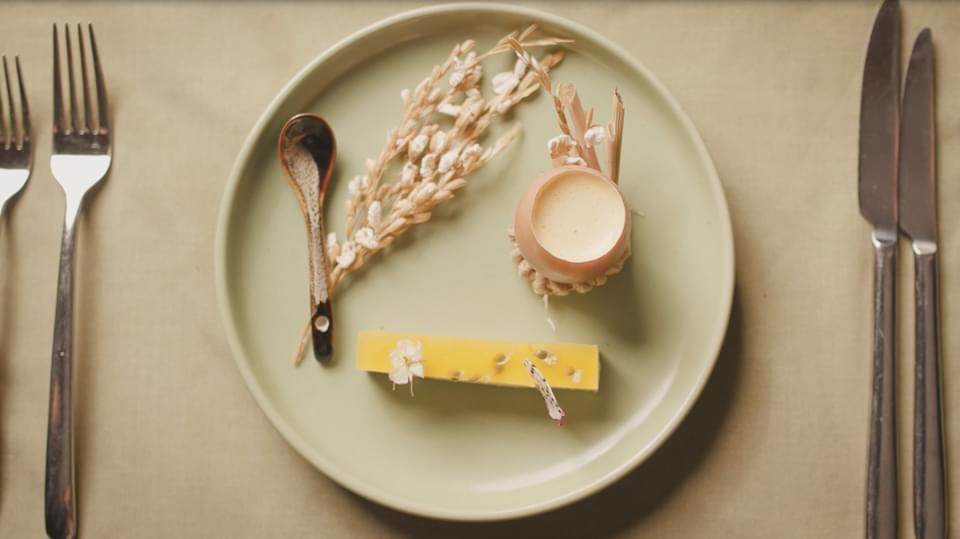
Egg Coffee
While adding an egg to your coffee appears very strange to foreign visitors, egg coffee is a favorite of the residents of the country’s capital, Hanoi. Egg coffee is made up of coffee, eggs, and milk—three simple ingredients that when mixed, create a unique flavor. This coffee must be enjoyed as soon as it has been mixed and is still hot. In Hanoi, egg coffee is famous as a culinary specialty, first appearing in the early 20th century. The most famous coffee shop is Giang Café.
Differences in Coffee Culture
Different regions in Vietnam have their own distinct way of preparing and enjoying a coffee. For example, Southerners often wrap ground coffee in a thin fabric bag and cook it in an earthenware kettle, preferring to drink iced coffee. Northerners usually choose filtered coffee and black or brown coffee beans that have a very strong flavor. All coffee shops have their own unique character and styles, and many have been operating from generation to generation.

Saigon
For the Saigonese, iced coffee is a popular drink for all ages. When you say “Coffee?,” it is an excuse to invite friends for good conversation. The cups of coffee become the link between two or more people. You will see men who are drinking coffee with the daily newspaper, sitting on low plastic stools on the sidewalk, while the coffee shops are full every morning. “Cafe bệt” is a humorous term used in Saigon, where everyone sits freely on the ground to drink coffee. Notre-Dame Cathedral Basilica is the ideal place for this type of coffee. Here, black coffee and milk coffee are not brewed using filters, and they are often served in plastic cups with straws so you can drink on the move.

Hanoi
One of Hanoi’s oldest cafés, Cafe Lam Hano is a one-room establishment that is practically a historical monument. Its proprietor, Nguyen Lam, provided coffee, and often loans, to the city’s impoverished artistic community during the war. Rumor has it that he is sitting on an art collection now worth a fortune. He serves Vietnamese-style hot and iced coffee to a crowd of faithful regulars. Many of the great names in Vietnamese painting have passed through here: Nguyen Sang, Nguyen Tu Nghiem, Van Cao and Bui Xuan Phai, a veritable collection of masters in Vietnamese art culture.
Cafés in Hanoi are commonly named after the owner, and many streets are devoted to coffee shops, such as Hoe Nhai, Phan Dinh Phung, Nguyen Huu Huan and Trieu Viet Vuong. In Hanoi, coffee is the most favorite drink of artists, the elderly and businesspeople. They consider drinking coffee as an art that hides a long story.
Hanoians have a much greater variety of names for their coffee compared to the Saigonese. One regional specialty is brown coffee (cap phe nau). It is served with condensed milk without ice, and is considered far more bitter than the Saigon version. Because of its small size and dense population, Hanoian coffee shops are simpler than in Saigon, and locals prefer to drink in small cafes in the Old Town or on the sidewalk.
A In-Depth Look at Vietnamese Tea Culture
Tea drinking has been a tradition of the Vietnamese people for over 3,000 years and, like many places throughout the world, is an integral part of Vietnamese culture. Present everywhere from daily life to holidays and weddings, tea brings friends and family together in conversation and celebration. As a Vietnamese person, I newly discovered our drinking culture and its sophistication while recently cruising aboard a luxury boat. I loved the tea demonstration and the introduction of tea aboard Emperor Cruises on the pristine Bai Tu Long Bay. The demonstration allowed me to really understand the art of drinking tea, from the countryside folk and montagnards, to normal people and royalty.
Che or Tra, is still confused even by Vietnamese people in daily language, and although many foreigners believe all teas in Vietnam are simple green teas, this is not really the case. There are many types of tea in Vietnam, each with its own unique flavor and properties, and there are many aspects of tea culture worth noting. The therapeutic and medicinal functions of tea are well known. In humid weather, hot tea is devoured for its surprising cooling effect, and in cold weather for its warmth.
Tea cultivation, its historical influence in Vietnam, its relationship to the environment, its economic impact on the ethnic minorities who grow it, combined with the aesthetic aspects and social importance of tea-drinking rituals, could all provide topics for extensive research.
Like many locals, I often drink ‘Tra Nong’ (Hot Tea) or ‘Tra Da’ (Iced Tea) when I have a few moments to myself. My parents in the countryside of the Red River Delta drink green tea at home and in their fields daily, as their parents, grandparents and ancestors have done since the old times. There are many original varieties of tea enjoyed in Vietnam such as green tea, black tea, perfumed tea, or tea with flowers. The countless methods in which to prepare and enjoy them are very interesting to discover.
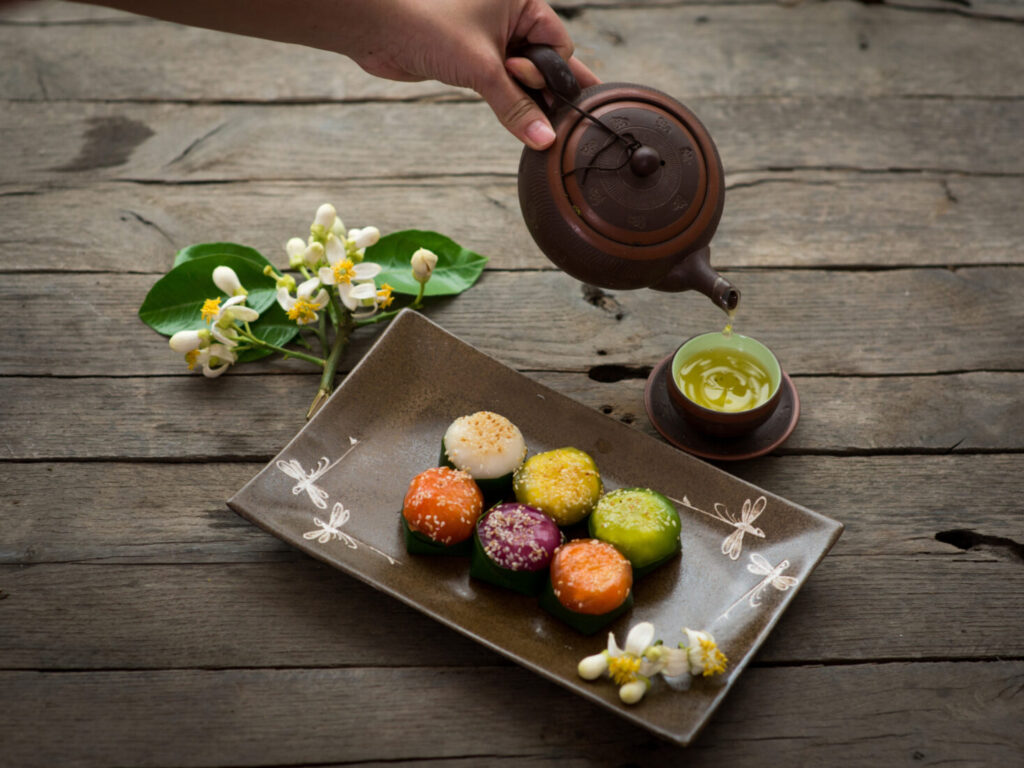
Vietnam is among the top tea producers in the world, and the people have a habit of drinking tea every morning, after lunch and on special occasions. A cup of tea is always a good excuse to start a relaxed conversation or serious discussion, and is also very important to show hospitality to guests that visit your house. They often drink “tra man”, fresh tea buds with some dried leaves that are steeped in water.
In the countryside, locals collect the green leaves of the plants, toast them and boil them. They keep it warm in a ceramic tea pot Bat Trang used by the whole family, and every household will have the same teapot for many years. Sometimes, they bring it to the fields and drink tea on their lunchbreak.
In the mountainous areas, the montagnards drink so called ‘Shan Tuyet Tea’, which has a special processing technique. The fresh tea buds are as big as banian buds and coated with lanugo. After being processed, they are covered with a milky layer of “snow,” (shiny aromatic herbs) and the gas that is released is then inhaled. When drinking it, the tongue will feel a slightly bittersweet taste that is followed by a persistent sweetness in the throat.
If travelers go to Suoi Giang in the tea harvesting and processing season, they will smell a characteristic flavor of this tea region. Due to the special climate here, locals do not have to use any kind of pesticides because pests are not an issue. In the winter, there is little sunlight, and fog covers the entire region. The tea buds are also covered by fog and you will feel a biting cold on your fingers when picking them.
The tea trees here are over 300 years old. Their trunks and buds are very impressive, which makes them different from other types of tea. Shan Tuyet tea varieties have all three main characteristics: aroma, a strong taste and blue water. The tea, from harvest until processing, is produced manually by the Mong ethnic people here.
Although without much of the ceremony associated with Japanese tea culture, Vietnamese tea culture is not without its own sophistication. The art of drinking tea is based on the tea preparation, the invitation to the guests, and the act of enjoying the brew.
The tea connoisseur says, “Nhất thủy, nhì trà, tam bôi, tứ bình, ngũ quần anh” which translates as, “Of most importance is the water souce, the second is the tea variety, the third is how to prepare tea correctly, fourth comes the tea pot, and fifth is loved ones enjoying it together”.
Drinkers can imbibe it solo (nhat am), in pairs (doi tam) or in groups (quan am). Depending on the particular situation, there are various sized teapots used for different occasions.
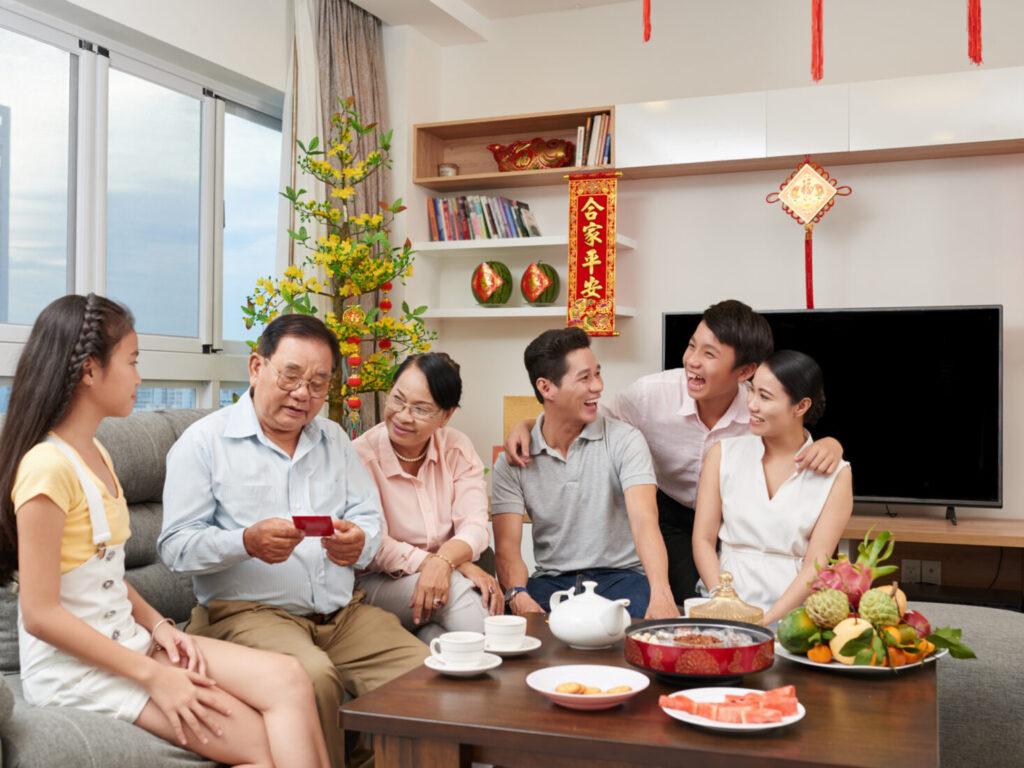
Drinking Style
Vietnamese tea drinking is simpler than the Chinese or Japanese customs, but it bears the essence of Vietnamese culture. The yellow and green of the tea and the natural scent of flowers symbolise the country, rich in culture and natural resources. Bitterness in the first taste reflects the hard-working life of the people, while the sweet and cool aftertaste that lingers evokes the Vietnamese soul – sentimental and faithful.
A tea course requires a brazier, a boiling pot, an earthenware pot of cold water (usually rainwater, and on special occasions, some dew gathered from lotus leaves). To serve, one uses a teapot, teacups, a tea box, and a few pieces of aloe or aromatic wood.
The host will boil the water for a few minutes, then take it off the fire and let the temperature drop to about 80-90 degrees Celcius. It is poured gently into the teapot, and then covered tightly for about five minutes. While the tea is brewing, tea connoisseurs will comment on the fine aroma of the tea, always keeping it as the focus of the conversation, as you would do when wine tasting. From the teapot, the tea is poured into a large cup called a soldier-cup.
This procedure ensures an even distribution of the tea’s flavour and color. If it were poured directly into each cup, the first cup would be more diluted than the last. As you sip the tea, discuss its taste and the mood it brings you.
“A tea server slowly pours tea into cups from a teapot. The pouring is performed gracefully, in a manner known as ‘high mountain-long river’, which helps the scent of the tea spread evenly. Offering it to guests, the host holds the cup with three fingers, offering the tea in that symbolizes ‘three dragons flanking a pearl’.
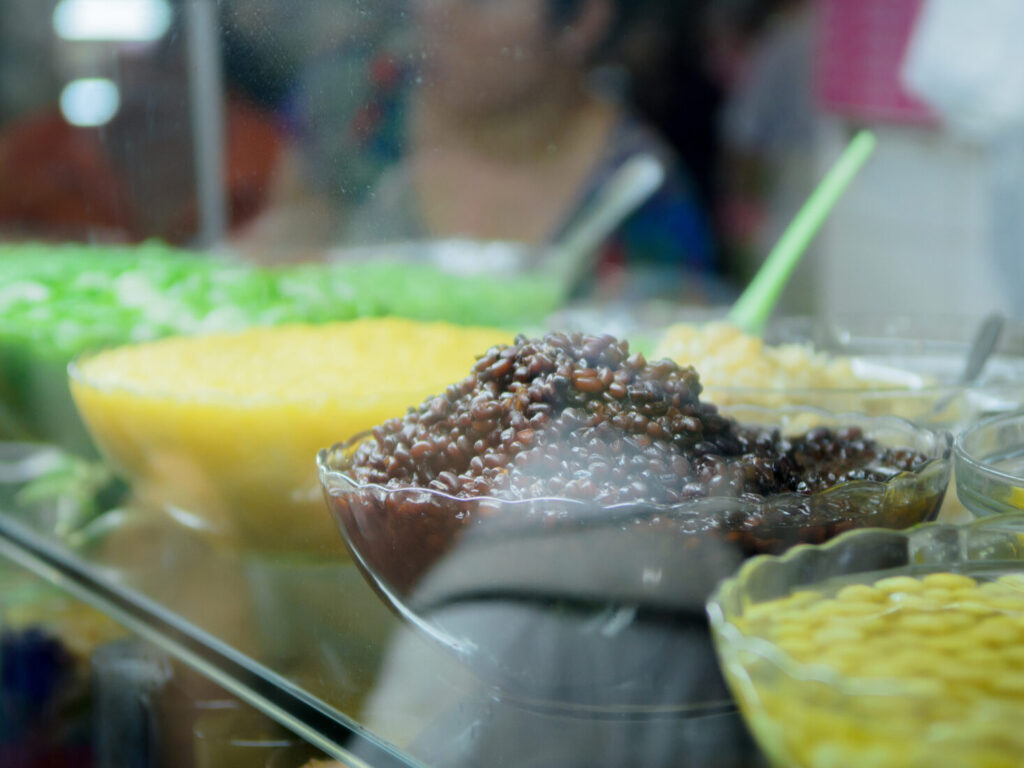
That’s only a snapshot of the tea drinking culture of the Vietnamese people. “Enjoying a cup of tea and thinking about life helps people to be good and avoid evil,” Quang says.Four words – Hòa, Kính, Thanh and Tịch – are used to describe the intangible aspects of tea drinking. Hoa means peace, Kinh implies respect for the elderly and friends, Thanh means tranquility, and Tich signifies leisure.
Quang says serving tea correctly is an elaborate ritual. For starters, you have to choose your teapot and cups with care, and they must match the tea.”The cup also changes according to the season. In winter, it should have a bottom and rim of equal size, so it doesn’t lose its heat, and the drinker can hold it inside his palm. But in summer, tea should be served in a cup with a larger rim, so it can cool quickly,” he notes.
All the pots and cups are cleaned in boiling water, which gets rid of the dirt and warms them up. Dried tea leaves are put inside the pot, which is then filled with boiling water and covered. More hot water is poured over the pot, so that it is heated both inside and out, and the leaves are thoroughly brewed.It can be said, that Vietnamese tea is a sophisticated art which takes lots of time to master.
However, it can of course be enjoyed in a very simple manner.” Tea types can be divided into three kinds with different properties, including dried tea leaves, tea combined with herbal remedies and tea scented with flowers.
Lotus-Scented Tea for the King
Besides unscented green tea, teas with the scent of flowers are unique examples of Vietnamese tea culture. The whole process is completed by hand, in a very careful manner, to transmit the natural scents into the tea. There are many varieties of tea enjoyed in Vietnam with flowers. Among them is jasmine tea (tra nhai or lai) or lotus tea (tra sen).

Lotus is Vietnamese national flower and grows across the country. Hue lotus tea is Hue’s speciality. Enjoying this lotus tea is a traditional ceremonial art of the Imperial City of Hue. During the Nguyen Dynasty, imperial maids used to row to Tinh Tam Lake to collect dewdrops from the sen leaves to make tea. The maids served it to kings in special teapots, one for each of the four seasons.
“Lotus tea has its own summer teapot, for example,” says Quang – our tea expert on board Emperor Cruises Halong. “Sen flowers grow in all of the country’s rural areas. But a sen tea connoisseur prefers tea scented by flowers that grow in Tinh Tam Lake, where the lotus flowers are much more aromatic than from elsewhere”, he explains.
Lotus flowers bloom from early May through June. This is the season when dried tea leaves are traditionally placed in newly opened lotus flowers, and then tied to perfume the tea.”When the lotus flowers opened at midnight, the tea leaves were placed inside the flowers. At 5am, these same flowers were then harvested to make tea,” adds Quang.
Lotus flowers for fragrant tea should be picked before dawn. Cool air and fog help to preserve the light, pure fragrance of sen, because, after sunrise, sen loses its fragrance due to the heat.In the past, lotus tea was only served to kings in Hue, Minh Mang and Tu Duc. Emperor Bao Dai is among some of the famous rulers of the past who loved to enjoy tea daily.
Nowadays, everyone can enjoy lotus tea aboard Emperor Cruises Halong, and the surrounding villages and areas are famous producers. For example, Quang Ba, Tay Ho and Nghi Tam Villages have long been renowned for making high quality lotus-scented tea.
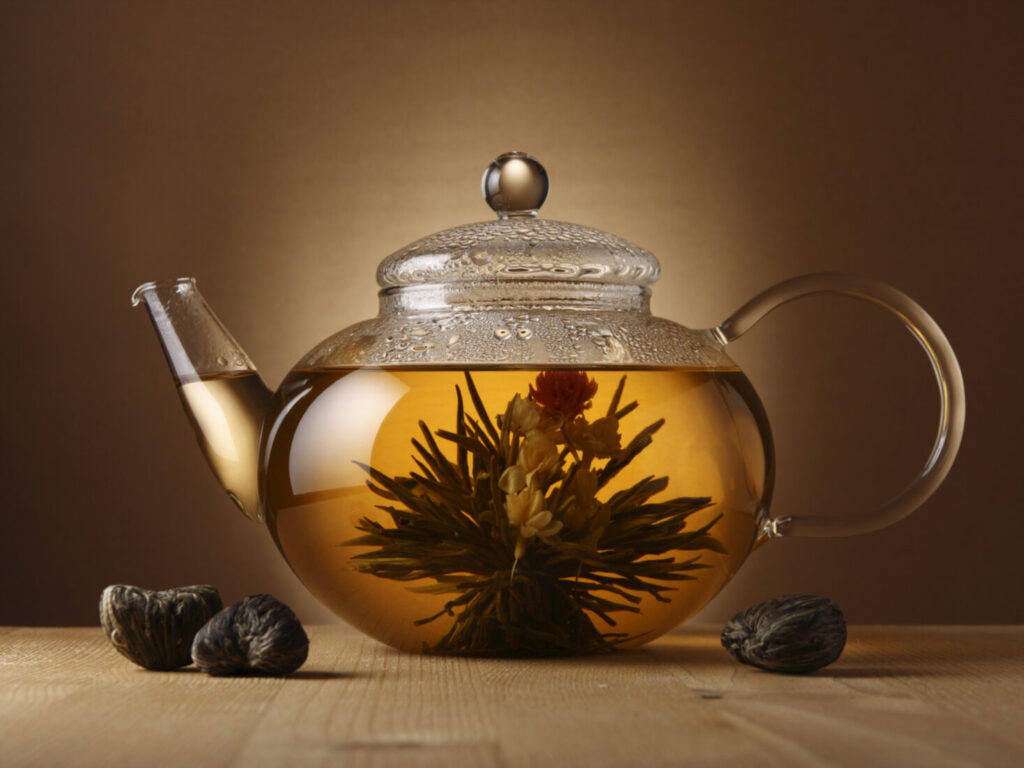
“As a result, many Hanoians have known for generations how to enjoy lotus tea in the most sophisticated, precise and stylish way”, added Tuan Nguyen says. West Lake lotus tea is considered the most precious lotus tea because of its beauty and aroma.
There are also many closely guarded secrets for making tasty lotus-scented tea.“One method involves layering dry tea and dry lotus anthers, then wrapping them in water-resistant paper for three days to preserve the delicate fragrance. This process must be repeated seven times for three weeks to make the most perfect sen tea”, says Mr. Trung, a tea maker in the West Lake, who learned the art from his father.
20th Century writer Nguyen Tuan, praised lotus tea for embodying the highest cultural values of the Trang An (an old name for Hanoian natives). “It reflects the precision, style, elegance and connoisseurship of Hanoian culture, and Sen Tea is the most precious and popular perfumed tea”, he remarked.
The sen fragrance embodies the most essential qualities of earth and heaven. “Lotus plants grow in black mud, but never smell bad. Therefore, the lotus represents the most important qualities of sky and earth. This is why the lotus roots, leaves and flowers are precious herbs,” said Vietnam’s most renowned herbalist, Hai Thuong Lan Ong (1720-1791).
The tea connoisseur and renowned painter, Mr. Pham Luc, enjoys lotus tea for its aromatic fragrance, compared to other teas. “Tra sen is a national heritage which should be preserved,” Luc says.
Pham Ha
Vietnam’s Lux Cruises Group targets Australia and New Zealand
Lux Cruises Group’s Founder and CEO Pham Ha and Vice Director Cao Quang Hung will join HCM City Tourism Department to showcases its expertises, authentic and unique heritage cruising in Australia and New Zealand from 10 May to 18 May 2023.
Privately-owned Lux Cruises (www.lux-cruises.com) including Emperor Cruises and Heritage Cruises, founded in Hanoi by Pham Ha in March 2014 originally in Nha Trang Bay, Halong, Bai Tu Long, Lan Ha Bay and soon Phu Quoc Island City.

Six boutique vessels, tenders, speedboats,
It operates 6 luxury boutique vessels in the best rivers, bays, islands, beaches, archipelagos of Vietnam.
A new 20 cabin ship, Heritage Binh Chuan, has been launched in September 2019 for three-night voyages in the archipelago of Cat Ba and Lan Ha Bay, offshore Hai Phong for the first time.
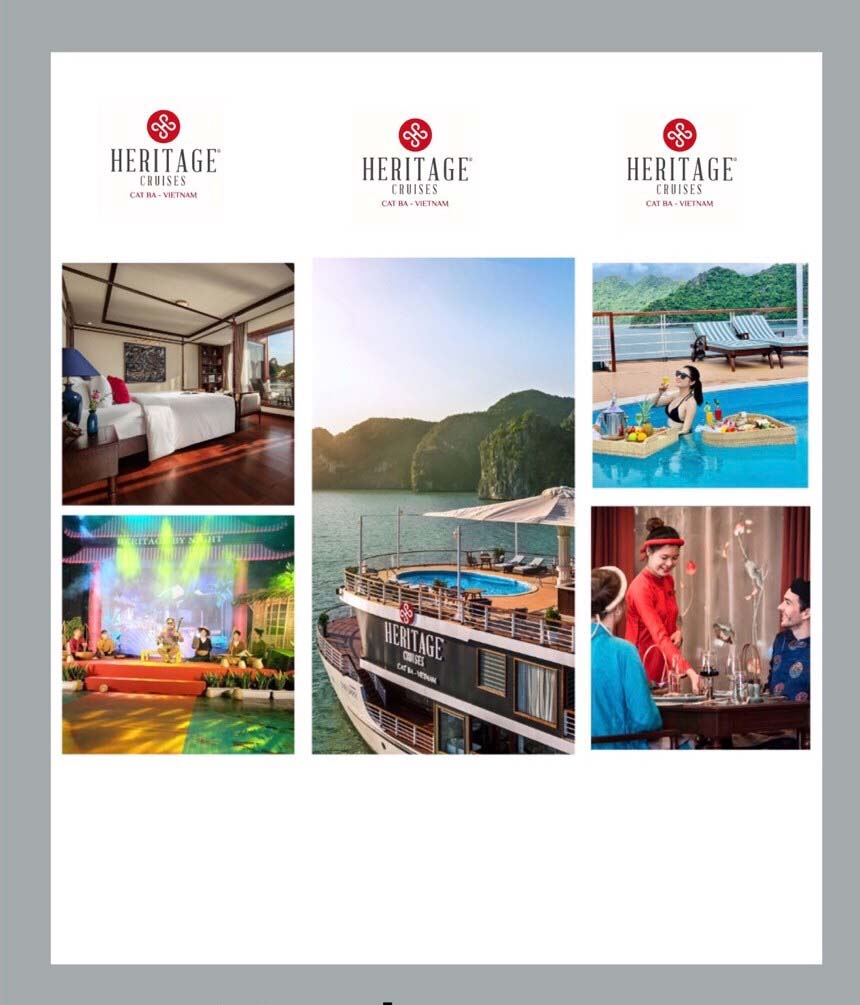 Embark on a journey back in time to Vietnam in 1930s with Heritage Cruises Binh Chuan Cat Ba Archipelago boutique lifestyle cruise in Lan Ha Bay in Cat Ba Archipelago. Combining the classical charm of French Indochina with a sense of timeless chic that only the Lux Cruises Group can provide, the cruise is as much an art and heritage space as it is a 5 star boutique cruise. Heritage Cruises Binh Chuan Cat Ba Archipelago invites guests to relive the romance of this bygone era in their boutique cruise which offers all the comforts of the 21st century.
Embark on a journey back in time to Vietnam in 1930s with Heritage Cruises Binh Chuan Cat Ba Archipelago boutique lifestyle cruise in Lan Ha Bay in Cat Ba Archipelago. Combining the classical charm of French Indochina with a sense of timeless chic that only the Lux Cruises Group can provide, the cruise is as much an art and heritage space as it is a 5 star boutique cruise. Heritage Cruises Binh Chuan Cat Ba Archipelago invites guests to relive the romance of this bygone era in their boutique cruise which offers all the comforts of the 21st century.
The most luxurious cruise in Vietnam has many cultural features, bringing with it the stories of cultural and historical heritage, fine art, architecture, fashion, and the quintessence of Vietnamese cuisine. The yacht is newly built based on the Binh Chuan ship built by the ship king Bach Thai Buoi, the first Vietnamese to launch a ship from Hai Phong to Saigon.
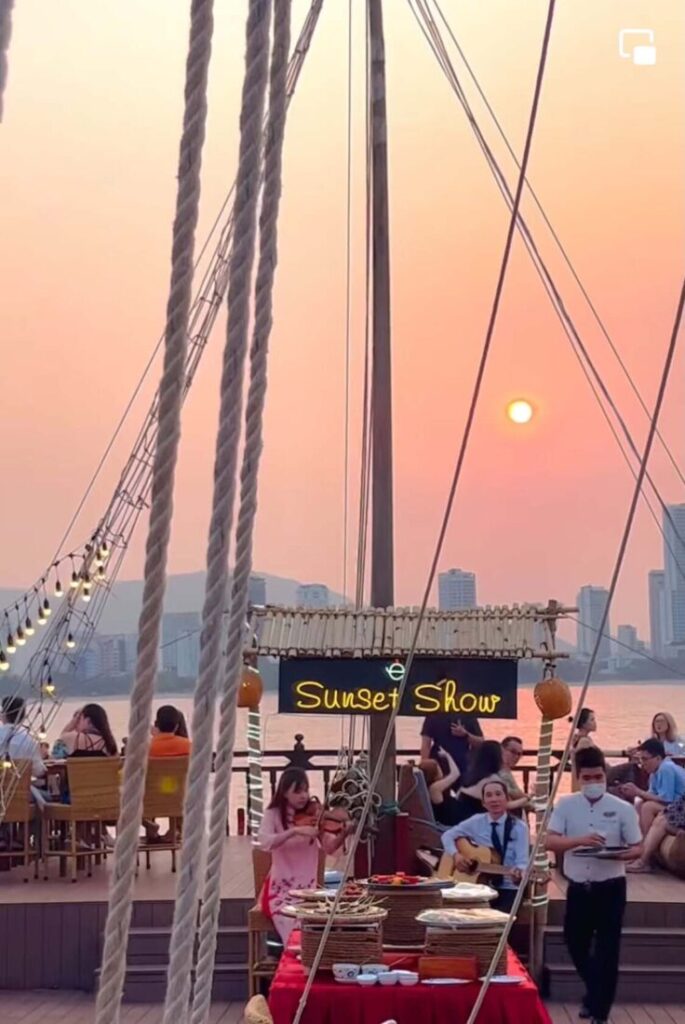
‘As we introduce our boutique brands into the Australian and New Zealand markets, we are looking forward to leveraging the extensive experience, creative approach and exceptional media relationships,’ said Pham Ha.
‘We look forward to welcoming new and returning travellers who are keen to discover our region’s alluring waterways,’ Cao Quang Hung, Vice Director of Lux Cruises Group said. “The post pandemic travelers want to explore, dream, discover, indulge, experience, relax and immerse themselves in natural and culture heritage.
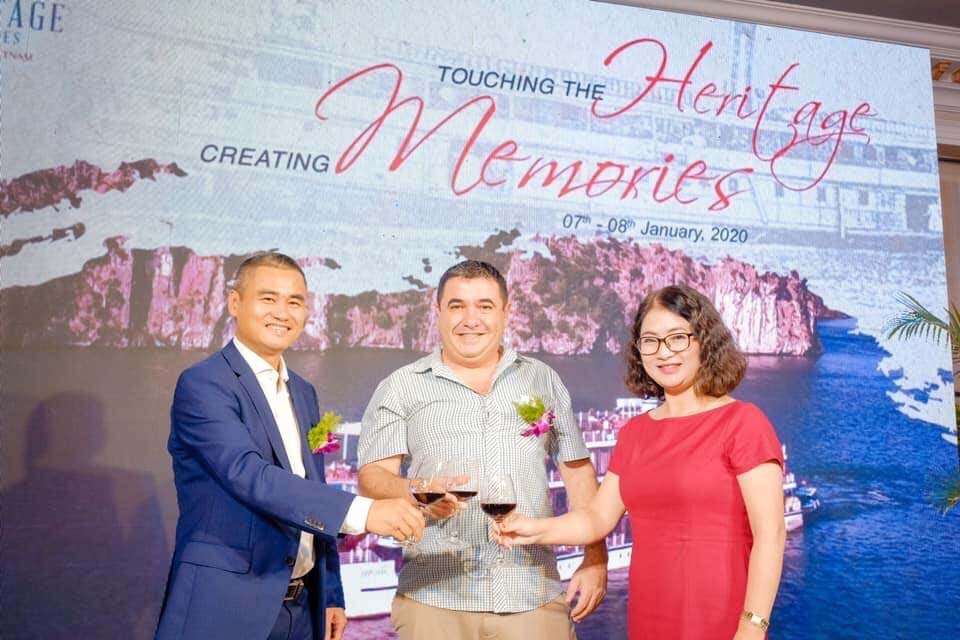
Cruise trending
‘With Vietnam and cruising in Lan Ha Bay, bai Tu Long and Nha Trang Bay in particular trending with Australian and New Zealand travellers during 2023, the timing is ideal to showcase Lux Cruises Group as one of the most luxurious cruises line in Vietnam,’ Cao Quang Hung said.
‘We love to share Vietnam’s stunning waterways, intriguing cultures, fascinating history, delicious cuisine and spectacular scenery with Australian and New Zealand travellers,’ Hung said
Call investors
Making a 67.3 per cent share of the country’s total tourism revenue, a top favourite ocean destination among 156 beach nations, cruise tourism in Vietnam has not been promoted properly so far.
The number of cruise tourists accounts for only 2-3% of the total number of international visitors to Vietnam. Lux Cruises Group’s Founder and CEO Pham Ha emphasized that it is necessary to attract investors to invest in cruise ships and yachts with Vietnamese nationality that run along the coast in this road show in these two countries.
Cat Ba Archipelago: Vietnam’s Secret Hideaway
The transfer by limo through the 5B Highway cuts down to only 1.5 hours from Hanoi to Cat Ba Archipelago. The Cat Ba Archipelago is an exotic destination with pristine beaches, secluded lagoons, coves, tropical forests, and lakes allow holidaymakers to discover the best places for swimming, kayaking, and biking and many hideaways in the Gulf of Tonkin. Pham Ha founder and CEO of LuxGroup https://luxgroup.vn/ discovers
The central hub of Cat Ba is now framed by a chain of low-rise concrete hotels along its once lovely bay, but the rest of the island is largely untouched and as wild as ever. With idyllic Lan Ha Bay just offshore, you’ll soon overlook Cat Ba Town’s over-development. The two first nights, we stayed at Hotel de Perle Cat Ba – MGallery for an island experience: fish sauce factory, local market, floating village, sea food, beaches and bikes.
Photo connoisseurs hunted the best shots of sunset at the Cannon Fort on the mountain top. Visitors can find the landmark of President Ho Chi Minh, created when he visited the Island and the Cat Ba Fisheries Port in 1959. Cannon Fort (also known as high peak 177) is close to the three beaches, and here you can enjoy a panoramic view of the island from above. Head out of Cat Ba Town to the entrance of Cannon Fort, just 15 minutes away, and take a leisurely 20 minute stroll to the fort. In one direction are the green-clad limestone karsts stretching into the distance, while the opposite side is dotted with colorful fishing boats, beaches, and the town itself.
We started early in the morning to explore the forest in the hope of seeing some wildlife while escaping the burning summer heat. We chose the short trek trail leading to Ngu Lam Peak and the Kim Giao Forest with our guide, Van Anh. She was very informative and knowledgeable about the park and history. We walked the gentle two and a half kilometer Cat Ba National Park Education Trail, starting at the entrance to the National Park Headquarters, and Van Anh introduced us to some of the wonders of this special island. Its animals, plant life and diverse habitats are unique in Vietnam. Another activity is to visit typical karst caves with amazing features, such as Trung Trang and Quan Y or Hospital Cave. We visited Trung Trang Cave on our way back from the trek to Ngu Lam Peak, and were thoroughly impressed.
According to Van Anh, Cat Ba National Park (officially founded in 1986) is 15 kilometers from Cat Ba Town, and covers an area of 152 acres. It is one of the only two protected areas in Vietnam that include both a marine and a terrestrial component. A small forest trail behind the national park headquarters leads to Ngu Lam peak, which contains a nice watchtower with a spectacular panorama of forest-covered karts.
Foreign tourists can hire a local guide to head for a trek through limestone labyrinth leading to Frog Lake in the center, replete with small freshwater swamp forest area that provides water to the population of Cat Ba Island. There are many primary forest on the surrounding kart towers, and moving through to Viet Hai Village, tourist boats take guests back to Cat Ba Town or to some new low-key resorts in Lan Ha Bay.

Cat Ba Biosphere Reserve
Cat Ba Biosphere Reserve is adjacent to the Halong Bay World Heritage Site. It is one of the best examples in the world of a kart landscape by the sea. The 366 limestone islands contain landforms, caves and cave deposits that provide evidence of a long history of erosion and landscape evolution. Many of the small islands rise steeply or vertically from the shallow marine waters and are the distinguishing feature of the region. The bigger islands, including Cat Ba Island itself, are covered green tropical monsoon forest.
The archipelago is of global importance due to the high number of species found nowhere else. The golden-headed langur is one of the 10 rarest primates in the world due to its restricted range and small population size (about 60 in all on Cat Ba Island.) There are also regionally important habitat types including fringe coral reefs, mangrove forests, sea grass beds, willow swamp forest and tropical limestone forest. Most of the habitats are under severe threat, especially due to encroachment. With these special values, Cat Ba was acknowledged as the World Biosphere Reserve in 2004.
There are 5 villages on Cat Ba Island and the Cat Hai District administrative offices. Cat Ba is a major coastal fishing zone, and has tremendous potential in agriculture and fisheries as well as other development opportunities such as nature-based tourism, near shore artisanal fisheries and aquaculture. The famous local products here are Cat Ba Honey and Cat Hai Fish Sauce. Cat Ba has archaeological sites dating to the Pleistocene area, and relics such as ceramics pieces date to the Bac Son Culture about 6,000 years ago.

A Secret Hideaway
Staring from Beo Seaport, 10 minute from the main Cat Ba town by bus, we jumped into our private chartered wooden boat and ventured out on Lan Ha Bay. The floating village in Lan Ha Ba was amazing and probably the biggest in the Tonkin Bay. We got off the boat to visit the fishing farm.
As all destinations have their growth stages, the backpackers always come first, and the middle class and luxury travelers follow. It seems that Cat Ba is still in the first stage. Lot of bars, cafes and restaurants open late, some small resorts and party cruises please the people who have more time than money. A resort run by an Australian and Vietnamese couple just for backpackers is a prime example. They come for rest, relaxation, sun and fun. The summer, in particular, is busy and Cat Ba tourism is still seasonal; busy with Vietnamese for the summer period, and quiet for foreigners from September to April. While cruising we saw the Monkey Island with long and white sandy beaches appearing from nowhere. Others travelers avoid the crowded Cat Co beaches; they can rent a boat and take them to Monkey Island and nearby empty beaches where they have their own peace and privacy.
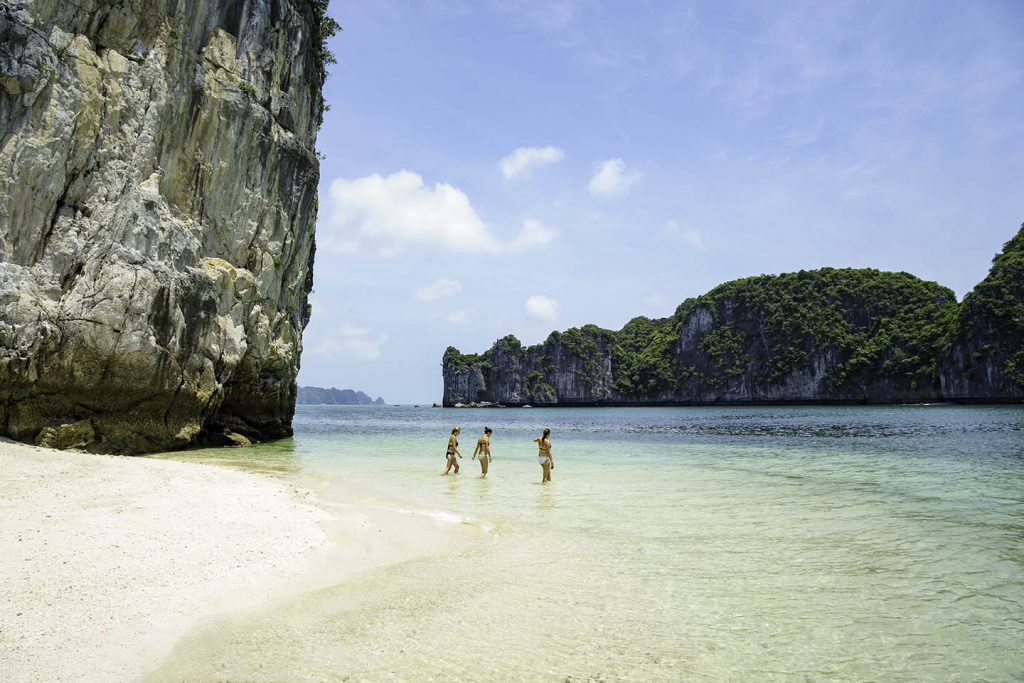
The scenery is breathtaking, and biking with the bike view is amazing. We spent one hour biking to reach the village and en route we could hear the fog singing and admired the charm of a quiet countryside with distant echoes of wild animals. Local people keep their village very clean, even on the water. They are particularly friendly, and the only vehicles present are electric cars, which makes it a peaceful place.
We arrived the prestigious and pristine Ba Trai Dao Beaches just 30 minutes after the cruise. One of our colleagues said Thailand’s islands and beaches are nothing compared to ours. Vietnam is too hidden, and we seem to keep our best beaches and islands a secret only for ourselves.
Our next excursion was some light kayaking in the afternoon, before checking in to the Nam Cat Resort. Hang Ca Area belongs to the national park, and is known by locals for its dark coves. With two people fitting snugly in each kayak in Hang Ca, we paddled on the bay and through the first cave to enter an amazing cove surrounded by limestone. The tour guide says that there are only 60 individuals on the island, a truly rare and important species indeed, risk to distinction. Overnight cruises options now available from Got Harbor for one or two night stay. www.heritagecruises.com
Frenchman falls for VN coffee
In the 1930s, the Morère family introduced and started to plant coffee in the highlands of the central province of Lâm Đồng, a region renowned for yielding some of the best quality coffee in the world.
Coffee, one of Việt Nam’s worldwide renowned specialties, was introduced to the country in 1875 by the French during their colonialisation of Indochina. Coffee plantations were located in the Central Highlands and owned mostly by the French.
This was the same year the Morère family moved to the country and settled down near Đà Lạt. They grew coffee in the 1930s in the Central Highlands, a region renowned for yielding some of the best quality coffee in the world.
The August Revolution in 1945 put an end to the French colonial time in Indochina and Việt Nam became independent. France did not want to lose its colony and came back until the decisive battle of Điện Biên Phủ, where the much better-equipped French army lost to young Việt Minh troops in 1954.
Pierre Morère, a descendant of the original Morère settlers, has continued in his family’s footsteps. His two-hectare coffee plantation in Đạ Sar Village, home to the Mong Cill ethnic people, is located about 20km from Đà Lạt. Morère has been planting Bourbon coffee, a premium type of Arabica coffee that is considered among the finest coffees in the world.
“Bourbon coffee trees grow very well in the natural conditions at an altitude of 1,500m in the highlands. The higher they are planted, together with suitable soil and sustainable agricultural approaches, the better their taste gets,” Morère said. “It was my grandfather who introduced Bourbon coffee to the land in 1930, and then my mother was born there and took over his business.”
Their vast coffee plantation prospered during that period but they had to leave Việt Nam at the end of the victorious anti-French resistance war.
Stories about his parents and the poetic land of beautiful flowers and lenient local people in the Central Highlands continued to intrigue Morère.
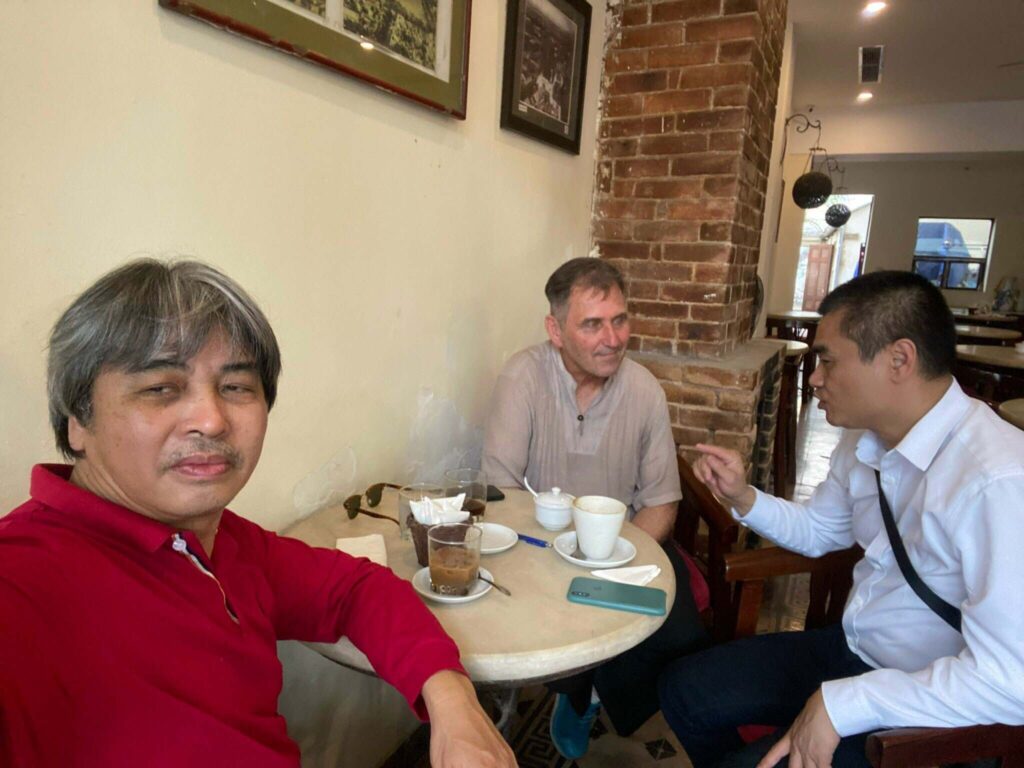
In 1999, he visited the birth place of his mother as a tourist. Eight years later, he decided to quit his job in a real estate company in France and return to Việt Nam to live and work on a feasibility study of the Bidoup-Núi Bà National Park.
In nearby Đạ Sar Village, Morère accidentally met his grandfather’s former workers from the coffee plantation, who were very surprised on seeing him and welcomed him as if he was their relative.
They accompanied Morère to cross over many forests and high hills in search of the precious Bourbon coffee trees that had been abandoned for over half a century. At that time, he decided to re-construct his grandfather’s coffee plantation with the best coffee seeds.
Thanks to his family’s past reputation in the region, he was granted permission to purchase land in Đạ Sar Village by the local authority, an unusual right for a foreigner in Việt Nam, then started to plant Arabica and also managed to locate the Bourbon trees left by his grandparents.
One of his biggest initial challenges was his limited knowledge about planting coffee.
“The paradox of the coffee business is that most of the businessmen in this industry do not study coffee before they step in. I’m one of them. I didn’t know anything about coffee before I discovered the Bourbon coffee in Việt Nam,” Morère said.
“But the ethnic people have taught me how to recognise the Bourbon coffee, how to grow it, how to take care of and harvest it properly. They also taught me everything about the soul of the forest where the coffee is planted, as well as how to start a new life here.”
Bourbon coffee trees are vulnerable to insects so it is one of the most difficult plants to grow, requiring strict natural conditions and specific agricultural techniques. With the aim of producing fresh coffee beans, Morère has managed to create fresh conditions for his trees by planting them in the forest, isolating them from other trees and applying natural anti-insect substances instead of chemicals.
“Coffee, especially the Bourbon, comes from the primary forest so it is best to leave it to grow in its primary condition without pesticides,” he said.
The first coffee trees started to bear fruit after only three years, though in other countries is usually takes four years. According to Morère, this was largely due to the favourable conditions and the climate of the region.
Only the red coffee beans are harvested and are processed totally by hand with the assistance of the Cill ethnic people. Each part of the process is done with great care and responsibility.
“The original taste of Bourbon Morère Pointu is a mixture of aromas from the forest and chocolate, which will make the drinker remember the taste more than any other coffee,” Morère said.
It took him several years to successfully process the coffee beans before creating his own brand name, Bourbon Morère Pointu, and introducing it to prestigious domestic and international customers, notably Annam Gourmet Market and renowned cook Pierre Gagnère.
He has even travelled to Japan to introduce his products to the Japan Coffee Association. The coffee has received much positive feedback on its flavour and quality.
Recently, Starbucks have chosen Arabica Đà Lạt and its premium version, Bourbon, for their coffee stores around the world.
His passion for coffee has made him feel such a close connection with the land where his grandparents used to live that he has no intention of leaving.
“I love coffee, the peaceful life by the forest and the lifestyle of the ethnic people here. I do not feel much difference between them and me. I live the way they live, and I’m very happy to be considered as their sibling and relative.”
“I believe that the coffee planted in Đạ Sar Village will become higher and higher in quality and soon become an economic specialty of the region,” he said. — VNS
Long Bien Bridge – the iconic French construction in the heart of Hanoi
Paul Doumer Bridge: Oil on Canvas, An artwork of Pham Luc.
Works on the bridge began in 1899 and when completed, in 1903, it was named after Paul Doumer, the French Governor General of Indochina. Visitors walking through the bridge could still see a metal plate attached to the truss which reads “1899 -1902 ~ Daydé & Pillé – Paris”. This is also the first steel bridge built across the Red River.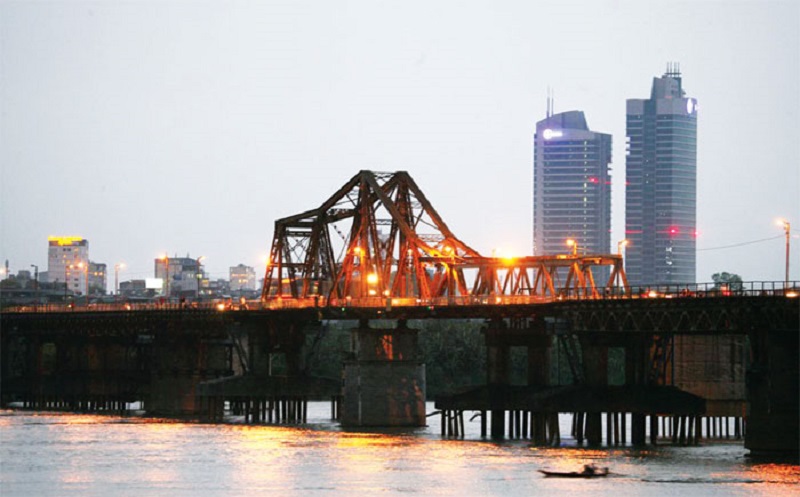
Long Bien bridge in the modern days/ Photo: Kinh te & Do thi
Long Bien Bridge is a reminder of French technological innovation at that time. Under the guidance of French experts, over 3,000 Vietnamese workers undertook the challenge of building the bridge, using up to 30,000 cubic meters of stones and metals, including 5600 tons of rolled steel, 137 tons of pig-iron, 165 tons of iron and seven tons of lead. The total cost of the bridge was up to 6,200,000 French francs at that time (roughly USD70 million today). Long Bien bridge construction period was originally planned to last 60 months, but it was completed in 45 months later.
According to the design of the French contractor Daydé & Pillé Company, the bridge’s length is 2290 across the river and 896 meters of stone approach roadway. Its 19 spans placed on 20 pillars in 40-meter-high (including the abutments). The single-track railway bridge runs in the middle while two side paths are used for motorbikes and bicycles (about 2.6-meters wide) and pedestrian way (about 0.4-meters wide). The direction on the Long Bien Bridge is left-hand traffic, instead of right-hand traffic like other bridges, meanwhile, cars are banned on the bridge.
The Long Bien bridge was almost destroyed by the US bombings during the years from 1965 to 1968, and in 1973 it was rebuilt.
In its more than 100-year history, Long Bien Bridge was once the second longest bridge in the world (just after the Brooklyn Bridge spanning the East-River in the US). It is even known as “the horizontal Eiffel Tower in Hanoi”.
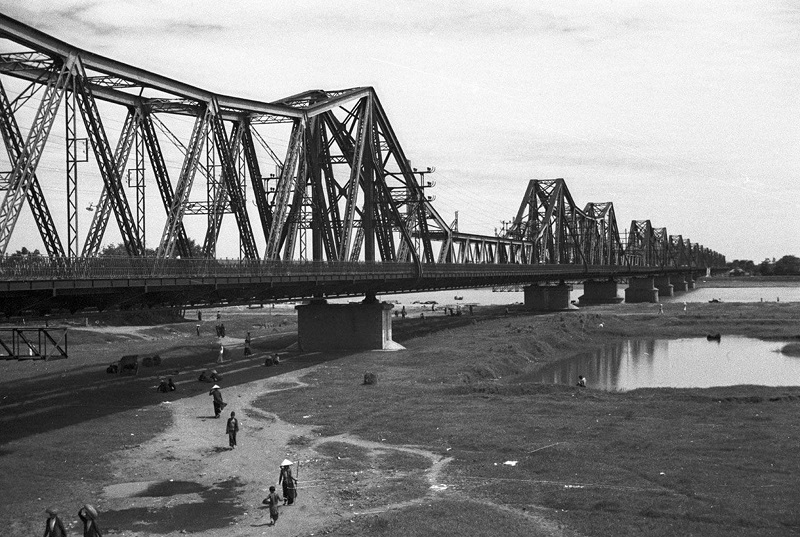
Long Bien Bridge in 1940s, the photo taken by unnamed French photographer.
The iconic French-built bridge has still remained an important part of daily life for residents of the capital. Teenagers, expats and tourists alike love to walk across it on the weekend, buying boiled glutinous corn or charcoal-grilled sweet potatoes.
The bridge is also the best place in town to watch the sunrise or sunset. Many brides and grooms as well as hip young local people choose Long Bien Bridge as the backdrop for their photos. In the afternoon, people in Ngoc Thuy village and Ngoc Thuy ward pick up fresh vegetables or fish for dinner from the small open-air afternoon market on the bridge.
Restoration efforts
Through many ups and downs of history and time, the bridge is seriously deteriorated. There have been several proposals put forward recently to modify and modernize the bridge, so that the city can tackle the increasing amount of traffic between the districts of Hoan Kiem and Long Bien.
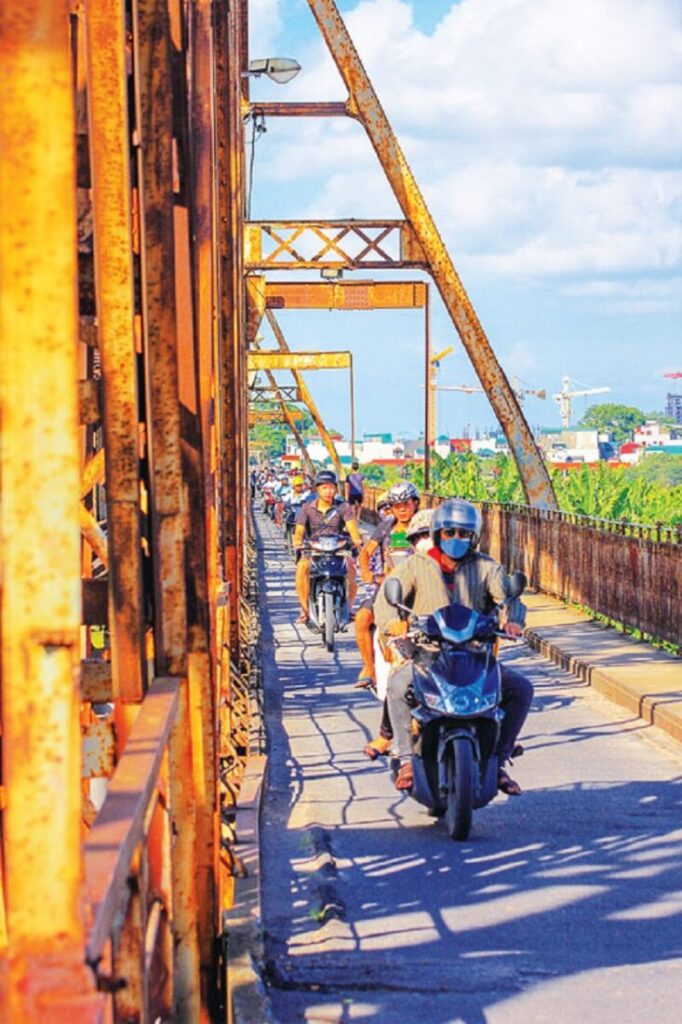 The bridge is an tourist attraction to both Vietnam and foreign travelers/ Photo: Kinh te & Do thi
The bridge is an tourist attraction to both Vietnam and foreign travelers/ Photo: Kinh te & Do thi
The most notable project is the one titled “Conservation, Renovation and Development of Long Bien Bridge” which has been cherished for more than 10 years by French- Vietnamese architect Nguyen Nga. In 2019, this project was officially released in Hanoi, with the help of the Association for Liaison with Overseas Vietnamese (ALOV).
According to Ambassador Nguyen Phu Binh, ALOV’s chairman, the project has initially received the support of Prime Minister Nguyen Xuan Phuc.
“Regarding the Long Bien bridge, the Prime Minister totally agreed to support Mrs. Nga’s initiative on the bridge restoration. He assigned the Government Office and the People’s Committee of Hanoi to discuss with Mrs. Nga and relevant agencies on the restoration. The Prime Minister requested the Vietnamese Ambassador to France to seek French support for the works and asked architect Nguyen Nga to mobilize capital sources to support the project,” Mr. Binh said.
Best Boutique Cruise Line in Asia
Embark on a journey back in time to Vietnam in 1930s with Heritage Cruises Binh Chuan Cat Ba Archipelago boutique lifestyle cruise in Lan Ha Bay in Cat Ba Archipelago. Combining the classical charm of French Indochina with a sense of timeless chic that only the Lux Cruises Group can provide, the cruise is as much an art and heritage space as it is a 5 star boutique cruise. Heritage Cruises Binh Chuan Cat Ba Archipelago invites guests to relive the romance of this bygone era in their boutique cruise which offers all the comforts of the 21st century.
Heritage Binh Chuan received the most prestigious award, TripAdvisor 2022 Travelers’ Choice Awards “Best of The Best”. Luxury Lifestyle Awards 2020, Video https://www.youtube.com/watch?v=45UNROguoNM&t=5s Lux Cruises to expand the brand to Quy Nhon, Nha Trang, Phu Quoc in Kien Giang province, and Cat Ba archipelago in Hai Phong city, for unique yachting experiences in the coming year.”
The most luxurious cruise in Vietnam has many cultural features, bringing with it the stories of cultural and historical heritage, fine art, architecture, fashion, and the quintessence of Vietnamese cuisine. The yacht is newly built based on the Binh Chuan ship built by the ship king Bach Thai Buoi, the first Vietnamese to launch a ship from Hai Phong to Saigon.
From the point of departure 100 years ago, today’s Heritage Cruises Binh Chuan takes travelers on a journey to discover Lan Ha Bay in style, a vast sea area with hundreds of islands, lagoons, and beaches, large and small, an experience recognized by the world. Channel 14 describes it “as beautiful as a dream” and Leonardo DiCaprio praises the ‘paradise’ beauty of Lan Ha Bay.
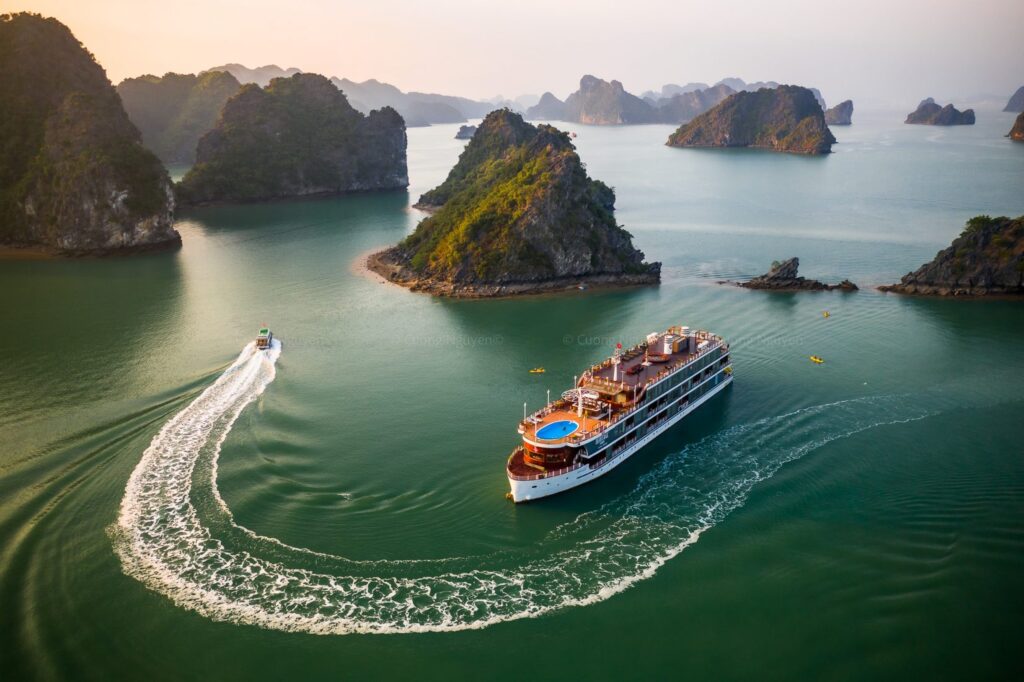
On the cruise, travelers can discover the authenticity of Lan Ha Bay, Binh Chuan Heritage Cruise will bring travelers into a traditional cultural space, the glorious legend of the intangible heritage, and enjoy the beauty of the natural heritage of Vietnam. Heritage Binh Chuan Cruise will bring the most authentic experiences with a minimum of 40 guests and a maximum of 60 passengers on a magnificent and sophisticated cruise operating in the Gulf of Tonkin.
Savored travelers will immerse into the culture, history, art, and people of Vietnam when cruising on a unique cruise amidst natural wonders. On this heritage cruise, travel connoisseurs can go upstream of history and culture to learn the business story of “Vietnam’s king of ships” Bach Thai Buoi and the life of the “Vietnamese Picasso“, Pham Luc, through a rich collection of 100 of his works collected and introduced by the owner Pham Ha in various locations.
Vietnam has one of world’s most beautiful coastal towns: US magazine
Cua Van Floating Village, in UNESCO world heritage site Ha Long Bay, has been named one of 16 most beautiful coastal towns by readers of U.S. magazine Travel+Leisure.
“This little village is completely composed of floating homes,” Travel+Leisure wrote. “About 700 people, traditionally fishermen, live in anchored houseboats, with kids attending a floating school.”
Located to the south of Ha Long Town, not far from Ha Long Bay, Cua Van Fishing Village is surrounded by limestone karst mountains.
The floating village has become a popular tourist attraction in recent years as visitors flock to there to see this unique way of life.
A majority of villagers have moved ashore, but several have chosen to maintain their livelihood in the floating village during daytime because the boats are their lifeline.
In 2015, the village was named the world’s most charming little town by Huffington Post, also based in the U.S.
Some of the other beautiful coastal towns featured on the Travel+Leisure list were Polperro in England, Manarola in Italy, Lunenburg in Canada and Port Fairy in Australia.
Cruising back in time
As incomes have continually increased around Vietnam over recent years, cruises have become more familiar among many Vietnamese travellers.
But not many know that cruises were first introduced in Vietnam in the early 20th century.
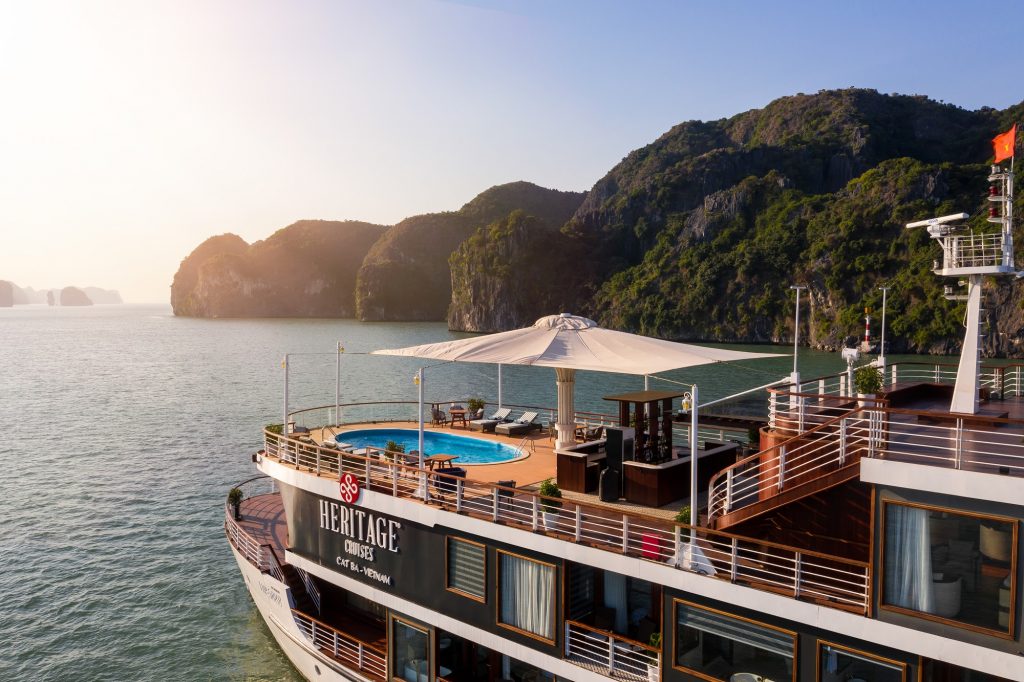
Nearby the dock of the Heritage Binh Chuan Cruise is a statue of late businessman Bach Thai Buoi, who was known as the “King of Cruises” in Vietnam.
His most renowned trip was called “Binh Chuan”, with this cruise taking on the name.
This cruise is rich in cultural values and boasts a library with books on Vietnamese culture.

On the shelves is also a copy of “Entrepreneurship in Age 1.0”, which tells of the great Vietnamese businessman Bach Thai Buoi. The stories were collected by his family members.
Along its corridors, cruise passengers can also admire old paintings, photos, statues, and outfits, all of which are representative of Vietnamese culture.
Art lovers on board can visit the first-ever floating gallery in the Gulf of Tonkin, with dozens of paintings by Pham Luc, who has been called the “Vietnamese Picasso”.
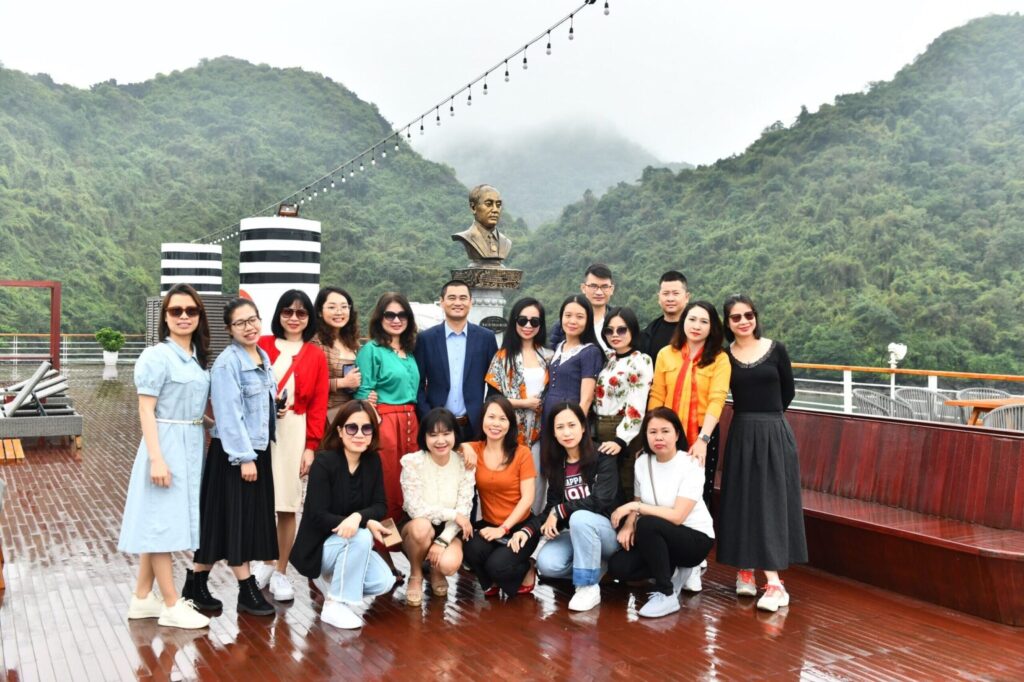
Besides contemplating the cultural values found inside the cruise, passengers can also opt for one or more of a range of leisure activities, including kayaking around Lan Ha Bay and soaking up the stunning sunset while sipping on a cocktail./.
Souce: VNA


